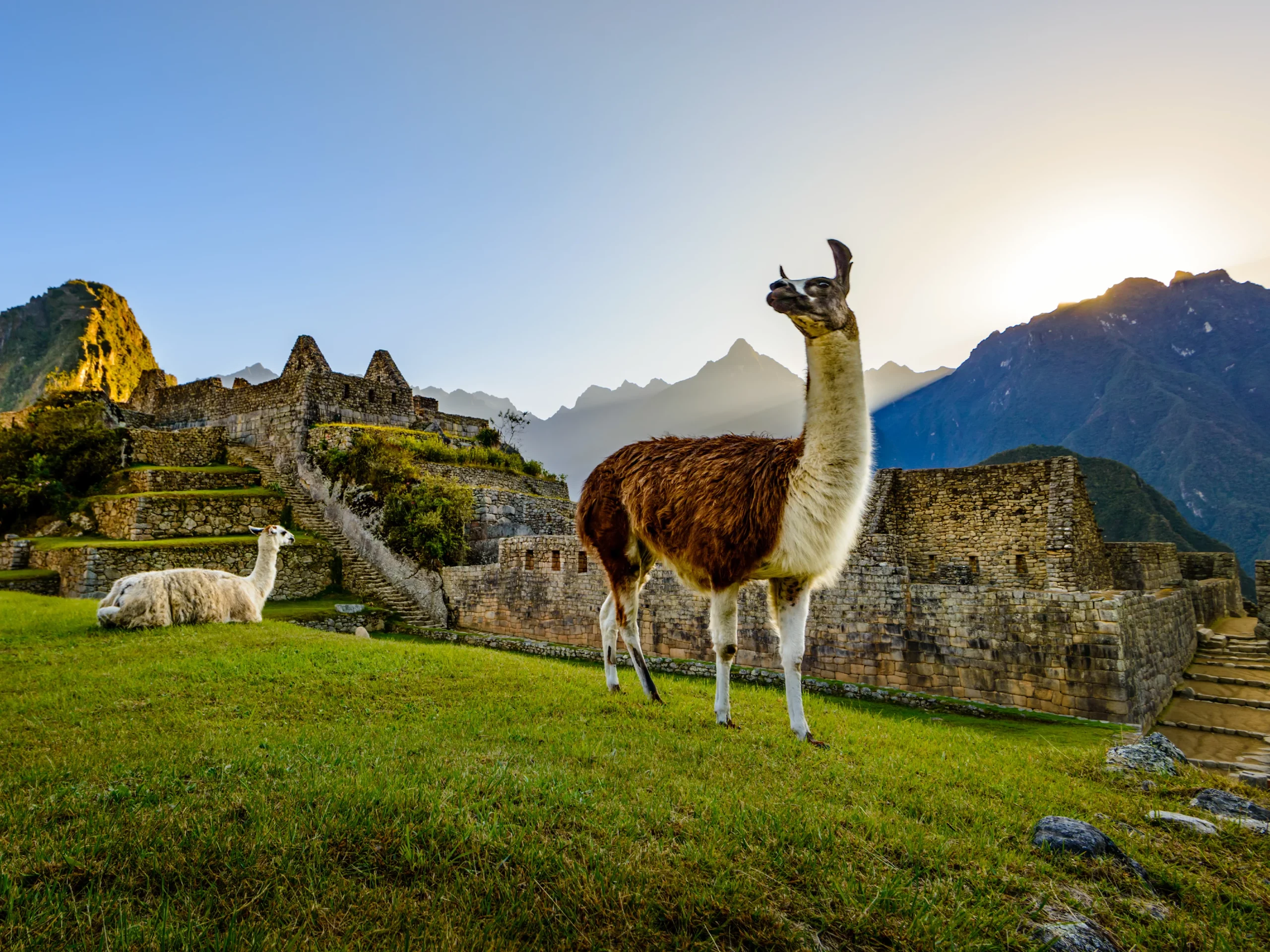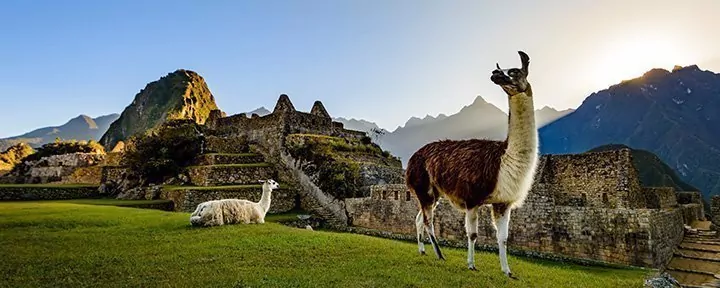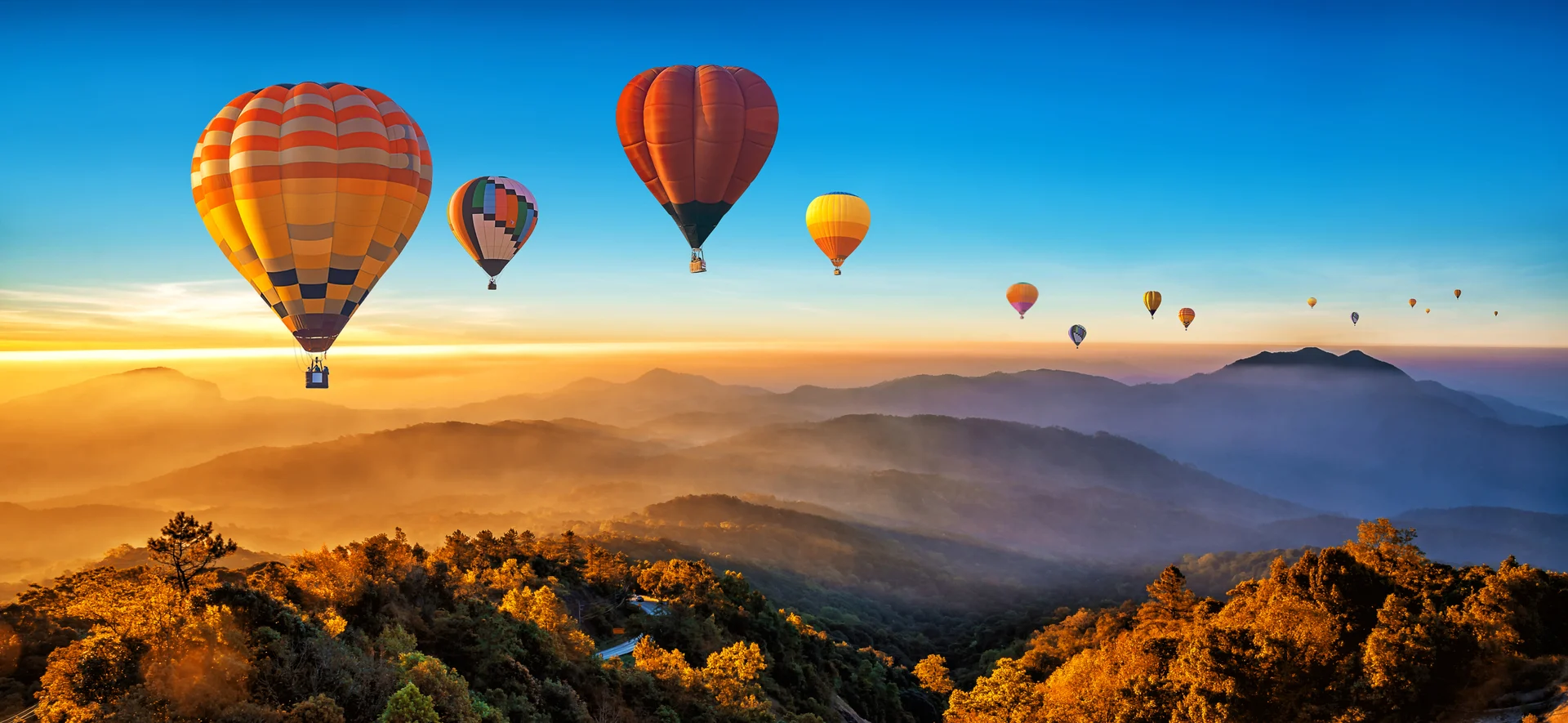Best time to travel
Unlike other equatorial countries, Peru is not exclusively tropical, and the Andes Mountains help bring a great deal of variety to the climate. The country can be divided into 3 different climes.
The coast:
Near the coast lies the driest deserts and moderate temperatures, low precipitation, and high humidity, except for the warmer and wetter northern reaches. Summers (December – April) are warm here, with daily temperatures reaching as high as 35°.
The Andes Mountains:
In the chilly Andes Mountains, rain is frequent in the summer, and the temperature and humidity decrease the higher up you go. The rainy season lasts from November to March, with rain typically coming in brief showers.
The Amazon:
The Amazon jungle is characterised by frequent rain and high temperatures except in its southernmost sections, which has colder winters and seasonal rain. The highest chance of dry weather is between April and October.
Most visitors opt to travel in the period from April to October, which are the driest and clearest months to visit both the Andes Mountains and the Amazon.
You can read more about the best time to visit Peru here.
| Weather statistics for Lima: | JAN | FEB | MAR | APR | MAY | JUN | JUL | AUG | SEP | OCT | NOV | DEC |
| Average maximum temperature | 26 | 27 | 27 | 25 | 22 | 19 | 18 | 18 | 19 | 20 | 22 | 24 |
| Average minimum temperature | 19 | 19 | 19 | 17 | 16 | 14 | 14 | 14 | 14 | 14 | 15 | 17 |
| Rainfall mm | 1 | 0 | 1 | 0 | 2 | 4 | 5 | 6 | 5 | 2 | 1 | 1 |
| Weather statistics for Cuzco: | JAN | FEB | MAR | APR | MAY | JUN | JUL | AUG | SEP | OCT | NOV | DEC |
| Average maximum temperature | 20 | 21 | 21 | 22 | 21 | 21 | 21 | 21 | 22 | 22 | 23 | 21 |
| Average minimum temperature | 7 | 7 | 7 | 4 | 2 | 1 | -1 | 1 | 4 | 6 | 6 | 7 |
| Rainfall mm | 163 | 150 | 109 | 51 | 15 | 5 | 5 | 10 | 25 | 66 | 76 | 137 |
| Weather statistics for Puerto Maldonado: | JAN | FEB | MAR | APR | MAY | JUN | JUL | AUG | SEP | OCT | NOV | DEC |
| Average maximum temperature | 31 | 31 | 31 | 31 | 30 | 29 | 30 | 32 | 33 | 33 | 32 | 32 |
| Average minimum temperature | 23 | 23 | 23 | 22 | 20 | 19 | 19 | 19 | 21 | 22 | 23 | 23 |
| Rainfall mm | 345 | 335 | 275 | 155 | 105 | 60 | 55 | 65 | 100 | 165 | 235 | 280 |
Passport & visa
As a British citizen, you must be in possession of a valid British passport. Your passport must be valid for at least 6 months after your return home.
As a British citizen, you do not require a visa to visit Peru for stays that do not exceed 90 days.
Please note: It is your own responsibility to check whether you need a visa for transit airports en route.
If you are travelling via the US, the following applies to British citizens:
To travel via the United States, you must apply for an ESTA (Electronic System for Travel Authorization). Without ESTA, you will not be allowed to travel through the United States. Apply for the travel authorisation in good time at least 72 hours before your departure to the US. All travellers must apply, regardless of their age. You can apply and find the price via the following link: https://esta.cbp.dhs.gov/esta/. You should have your passport, itinerary, credit card and e-mail address to hand when making your application. The travel authorization is electronically connected to your passport and is valid for 2 years or until your passport expires (whichever is earliest). We recommend that you bring a physical copy of your ESTA with you if, for example, the system is down on your arrival, however this is not a requirement.
If you get a new passport, you must apply for a new ESTA.
Note that you must contact the United States Embassy to apply for a visa if you have visited any of the following countries:
- Cuba as of 12 January 2021 (incl. layover)
- North Korea, Iran, Iraq, Sudan, Syria, Libya, Somalia, or Yemen as of 1 March 2011
Stricter requirements will also apply if you hold dual citizenship with any of these countries.
For further information on filling out your ESTA application, please see the overview of frequently asked questions and their answers here: https://esta.cbp.dhs.gov/faq?lang=en.
You can also get in touch by telephone at: +1-202-325-8000
If you are travelling via Canada, the following applies to British citizens:
To travel via Canada, you must apply for an eTA (Electronic Travel Authorization). Without eTA, you will not be allowed to travel through Canada. Apply for the travel authorization in good time. eTA costs 7 CAD per person and all travellers must apply, regardless of their age. You can apply via the following link: http://www.cic.gc.ca/english/visit/eta-start.asp. You should have your passport, itinerary, credit card and e-mail address to hand when making your application. The travel authorization is electronically connected to your passport and is valid for 5 years or until your passport expires (whichever is earliest). We recommend that you bring a physical copy of your eTA with you if, for example, the system is down on your arrival, however this is not a requirement.
If you get a new passport, you must apply for a new eTA.
The rules on visas can be checked on the Foreign Ministry’s website.
Travel documents
Prior to your departure, you can download our App here to find your travel documents and your contact details for TourCompass and our local partners.
On your arrival in Peru, you will be given a welcome letter containing a QR code. When you scan this code on your phone, you can access your tour itinerary showing, among other things, important start times of your pre-booked excursions and transfers. It is important to download these documents to your phone when you have Wi-Fi at the hotel, so that you can always access them, even when Wi-Fi is not available.
You will also find exciting information about the destination, our partner’s sustainability initiatives and a feedback form, which ensures a high level of service on our Peru tours.
We recommend that you download the WhatsApp app to your smartphone and add the phone numbers of our business partners. You can send messages and call them for free using the app when you have a Wi-Fi connection.
Vaccinations
We recommend that you contact your GP or an authorised private vaccination clinic for information about vaccinations. You can also read more about the rules regarding travel vaccinations here.
Please be aware of the rules about yellow fever – especially if you are entering via another country where yellow fever is present. Some countries require proof of yellow fever vaccination upon entry. Your vaccination certificate should therefore always be carried with you in your hand luggage when you travel.
Terms and conditions of travel
Please read our general travel terms and conditions carefully, as these are part of the agreement terms for tours purchased at TourCompass. Tours purchased from us are covered under the “Package Travel Act”.
Click here to read our travel terms and conditions.
All the flights and flight-inclusive holidays on this website are financially protected by the ATOL scheme. When you pay, you will be supplied with an ATOL Certificate. Please ask for it and check to ensure that everything you booked (flights, hotels, and other services) is listed on it.
Please see our booking conditions for further information, or for more information about financial protection and the ATOL Certificate, click here.
Travel insurance
We always advise you to obtain comprehensive travel insurance when heading off on your dream holiday. It is also highly recommended to acquire cancellation insurance for extra protection.
If your trip involves spending time at high altitudes, make sure to check that your travel insurance covers expenses related to altitude sickness.
Click here to proceed to our page on insurance, where you can read more about our recommendations.
Currency, price level, & tipping
The Peruvian currency is called Sol (PEN). The current exchange rate of the sol can be found here. We recommend that you bring both credit cards and US dollars (USD) in cash.
Credit cards are accepted at most hotels, restaurants and shops, and there are plenty of cash machines (ATMs) in all major towns and cities and at airports. There may sometimes be a surcharge when using a credit card. We recommend that you always bring some cash in either PEN or USD.
You can exchange US dollars (USD) at the bureau de change at airports and major towns and cities. Hotels also often offer to exchange dollars to sols, but the exchange rate is not as good.
Click here to get a general idea of price levels in the country.
It is a custom and appreciated to tip when you are in Latin American countries, but it is voluntary, and the amount you are willing to give is entirely at your discretion.
The guide below is indicative only.
- Restaurants: Should not exceed 10% of the bill
- Guide: 5 USD PP per excursion
- Driver for excursions: 2 -3 USD PP per excursion
- Maids: 1 USD PRPN
- Porters: 1 USD per suitcase
Our tipping guideline is in USD, but tips can also be paid in the local currency at the destination.
On treks, it is customary to tip the guide as well as any cooks and porters as thanks for their help. Below is an indication of what you should pay:
Please note that the below amounts are not for each participant on the trek, but a total amount from the group as a whole. We recommend that the group pools the tips and gives them to the recipient together.
Tipping on the 4-day Inca trek:
After dinner on day 3 of the trek, the cook and the porters hold a small farewell ceremony, as they will not be going up to Machu Picchu with you the next morning. Tips are given to the cook and porters after this ceremony.
- 80 soles per porter. The number of porters depends on the size of the group.
- 100 soles to the cook.
- 120 soles to the guide. This can be given after the guided tour of Machu Picchu on the last day.
Tipping on the 4-day Salkantay trek:
After dinner on day 2 of the trek, the cook and the porters perform a small farewell ceremony, as they will not be accompanying you on the two last days of the trek. Tips are given to the cook and porters after this ceremony.
- 60 soles per porter. The number of porters depends on the size of the group.
- 80 soles to the cook.
- 120 soles to the guide. This can be given after the guided tour of Machu Picchu on the last day.
Tipping on the 2-day Inca trek:
- 60 soles to the guide. This can be given after the guided tour of Machu Picchu on the last day.
Food & allergies
At the vast majority of our destinations, we are able to take allergies, as well as allergens or preferences, into account when it comes to food; however, it is important that you inform us of this when you book the tour.
Telephones, Wi-Fi & electricity
Telephones & Wi-Fi:
It’s expensive to use data and roaming abroad if it’s not already included in your mobile subscription. Contact your mobile phone service provider to find out what services are included in your subscription and what prices apply to you when travelling abroad.
If data and roaming are not included in your mobile subscription when travelling abroad, we recommend that you make use of the free Wi-Fi at your hotel or in restaurants. That way, you can call and write home free of charge via various services such as Facetime, Messenger and WhatsApp.
If you would like to be online all the time, the cheapest option will be to purchase a local SIM card with data on arrival in Peru.
Read more about how to get online when you travel, on our blog here.
Electricity:
In Peru, the voltage is 220 V. Depending on where you are in the country, the sockets may vary. We therefore recommend that you bring a multi-adapter with you, so you can be sure that you can charge your electronic equipment.
What to pack
Make sure you pack all your important and indispensable things in your hand luggage. This applies to items such as passports, visas, vaccination cards, travel documents, insurance documents, credit cards, money, computers, mobile phones and cameras, as well as information about your health and vital medicines.
Trekking in Peru:
If you’re going on one of our trekking tours in Peru, you can download our recommended packing checklists as a PDF below.
There’ll be a short briefing in Cusco about your trek the day before it begins, where you can get answers to any questions you may have about the trek and the packing checklist. You’ll be informed of the precise time of this on your arrival in Cusco.
On the 4-day Inca trek, there will be porters to help carry camping equipment, food and up to 8 kg of personal baggage per participant. You’ll be issued with a bag in Peru in which to pack your personal baggage, which will be carried for you.
On the 4-day Salkantay trek, there will be horses on the first 2 days to carry camping equipment, food and up to 8 kg of personal baggage per participant. On day 3, your baggage will be carried down to the train and you will get it back before the final stretch to Aguas Calientes. You’ll be issued with a bag in Peru in which to pack your personal baggage, which will be carried for you.
You will be required to carry your own rucksack on both of these treks. We recommend that you choose a rucksack with a 30-litre capacity, a hip belt and rain cover.
Download our PDF packing checklist here.
On the 2-day Inca trek, there are no porters, so you have to carry all your personal belongings yourself in your rucksack. We recommend that you choose a rucksack with a 30-litre capacity, a hip belt and rain cover.
Download our PDF packing checklist here.
Amazonas
If you are going to the Amazon in Peru, you can download our recommended packing list as a PDF below.
Please note that when traveling to the lodge in the Amazon, a maximum of 10 kg of luggage per person is allowed. The remaining luggage can be stored in Puerto Maldonado.
Download our PDF packing checklist here
Peru wishes to reduce the consumption of single-use plastic:
The Peruvian government has passed a new law to reduce the use of disposable plastic in the country.
This means that disposable plastics such as plastic bags, plastic bottles, straws, etc. may no longer be brought into museums, national parks or the country’s World Heritage sites (including Machu Picchu and the Amazon).
We therefore recommend that you completely avoid using plastic bags. Use fabric bags instead, or bags made of a waterproof material other than plastic when packing your bags at home. Bring a drinking cup with you that can be recycled and refilled.
Bringing plant products into the UK
Visitors are not permitted to bring plants, seeds, fruit, and other plant products into the UK from their travels outside the UK, unless they are accompanied by a plant health (phytosanitary) certificate. These rules also apply to smaller quantities of plants and plant products.
Read more about the rules here.
Travellers with reduced mobillity
Please note, our tours are generally not suitable for persons with reduced mobility. Please contact us for information about the possibilities according any specific needs.
Airline tickets
Most airlines have electronic tickets (e-tickets).
It is important that you check your name for spelling errors, as the name on the reservation must be exactly as it appears on your passport. If your name needs to be corrected, please contact us as soon as possible. Please note that this may incur a fee from the airline.
If you have booked our Peru tour that includes a flight over the Nazca Lines, please note that you will not be provided with physical flight tickets for this flight. Additionally, be aware that the weight limit for this flight is 85 kg per person. If you exceed this, there will be a charge for an extra seat. Please let us know about this when booking your tour, so we can reserve an additional seat ahead of time and guarantee that your scenic flight runs as scheduled.
Seat reservation
The airline will assign you a seat on the plane at check-in. If you have specific wishes regarding where you sit on the plane, you can make a seat reservation yourself on the airline’s website or in their app. Please note that most airlines require payment for a seat reservation.
It varies when airlines open for seat reservations, but as a general rule, you can book seats from the time of booking and up to 48 hours before departure.
We also point out that the airline has complete control over all seats on the plane and that they are therefore entitled to make changes to the reservation at any time.
If you do not make a seat reservation before departure, the airline will assign you a seat at check-in.
Check-in
Your passport and your booking reference, which appears on your itinerary, are required to check in.
We recommend that you download the airline’s app on your phone. In the app, there is an option for online check-in, which typically opens 24 to 48 hours before departure. The app also allows you to stay informed of any flight changes and other important information about your flight.
Please note that the flight times may have changed in relation to those listed on the travel itinerary you received when you booked your holiday. It is always the flight times in the airline’s app or on the airline’s website that apply.
At the airport
We recommend that you arrive at the airport to check in at least two hours before departure. It is a good idea to check the airport’s website for the latest updates.
From December 2025, Lima’s international airport, Jorge Chávez, will introduce a new transit fee called TUUA (Unified Airport Usage Fee). The fee is intended to cover the costs of maintaining and operating the airport.
The fee only applies to transit passengers and does not affect travellers whose departure point or final destination is Lima. For example, you won’t pay a fee upon arrival in Lima, but one is payable when flying from Cusco via Lima back to Europe. This also applies on our combined Peru & Ecuador tour when you fly from Cusco via Lima to Quito.
The amounts below are approximate, as they depend on the exchange rate for Peruvian soles (PEN):
- International–international transfer: approx. 12 USD per passenger
- Domestic–domestic transfer: approx. 7.50 USD per passenger
The fee can be paid by credit card at the airport or in advance via the official online payment system (https://pagotuua.lima-airport.com/), so you can avoid any waiting time at the airport.
Baggage
We use many different airlines for our destinations. You can check the exact rules for hand luggage and checked baggage on the airline’s website or in their app.
If domestic flights are used in your itinerary, please be aware that baggage permissions may be different from how they are for your international flights. In general, you can always purchase more baggage allowance locally.
NB: Read more about baggage restrictions in the train to and from Machu Picchu under “Type of tour and transport”.
Delayed baggage
If your baggage is delayed, please contact the staff in the baggage reclaim area to report your missing baggage.
It is important that you have your baggage receipt when completing your PIR (Property Irregularity Report).
Please note that you must not leave the baggage area at the airport until you have completed the report.
In the event of delayed baggage, we ask you to contact our partner, who will ensure that your guide/driver waits for you.
Flight delays or cancellations
Should any changes occur in connection with your flight reservation before departure, we will of course contact you to let you know.
Should your flight be delayed after check-in, the airline is responsible for rebooking your flight. They will typically book the next possible flight and arrange any meals and accommodation if necessary.
Our partner checks for any changes in arrival times and will naturally still wait for you, even if your flight is delayed.
If, due to a delay or cancellation, the airline books you on another flight number after you have arrived at the airport, please contact us on TourCompass’ emergency number.
Immigration & Customs
Immigration:
When you arrive at your final destination, you will go through immigration, where your passport and any entry documents and visas are checked. In many places, you will be required to provide fingerprints, and a photo of your face will also be taken for biometric recognition. You may also be asked questions about your travel plans in the country and possibly where you are staying.
Customs:
Once you’ve cleared immigration and picked up your luggage, you will head through customs. If you have nothing to declare, you can go through “nothing to declare”. If, on the other hand, you have something to declare, it is important that you go through “declare”. It’s your own responsibility to check the customs regulations that apply in the country you are travelling to.
Arrival
On your arrival, you will be met by a guide/driver who will be ready to welcome you with a TourCompass sign.
In the unexpected event that you are unable to find your guide/driver, please contact our local partner using the emergency number provided in your travel documents.
Hotel check-in and check-out
Normal check-in is typically from 2 pm, and you cannot therefore count on getting your room earlier. If you’d like to check in early, this can be arranged for a fee when you book the tour.
When you check in, the receptionist will generally register your credit card and may reserve an amount. This is not an additional fee, but customary at hotels to ensure payment of any consumption e.g. from the minibar. When you check out, the amount will be automatically released if you haven’t used it.
It is very normal for hotels to take a copy of your passport. In some places, this is a requirement of the local authorities.
Check-out is normally by 10 am. If you’re not travelling until the afternoon or evening, you can have your luggage stored until it’s time to leave. If you would like a late check-out instead this can be arranged for a fee when you book the tour.
It’s possible to store your baggage at the hotel in Cusco when you’re experiencing Machu Picchu, or if you are going on one of our treks where you only need to bring a small bag.
Type of tour and transport
In the event of unforeseen circumstances such as bad weather, blocked roads, or otherwise, it may be necessary to change the order of sightseeing tours and attractions in your itinerary.
Visits to the Machu Picchu Inca complex
The most famous Inca ruins in Peru are undoubtedly Machu Picchu. The ruin complex is visited by many tourists every year (up to 5,600 a day), so entry occurs in teams of 9 at set times during the day to prevent long queues and unnecessary waiting time.
The day before you leave for Machu Picchu, your guide will inform you about your entry time. We make use of the morning entry times between 06:00 a.m. and 08:00 a.m., unless these are sold out. If you have walked the Inca Trail to Machu Picchu, you will also arrive in the morning through the Sun Gate to the Machu Picchu Inca Complex.
Your guided tour of the ruins will last approximately 2–2.5 hours.
If you are going to climb the Huchuy Picchu, Hayna Picchu or Machu Picchu mountain (optional tours), this is most often scheduled after your tour of Machu Picchu. If you want to climb one of these mountains, we recommend that you book this hike well in advance and preferably when booking your tour, as there are only a limited daily number of permits for climbing these mountains.
Admission and entry times to Machu Picchu are governed by the Ministry of Culture in Peru (Ministerio de Cultura de Perú) and the rules are subject to change without notice.
Always bring your passport when you are visiting Machu Picchu.
Note that if you have received a new passport before going to Peru, but you booked your tour with us using a copy of your old passport, then it will be important that you bring both the new passport and the old passport (or a copy of the old passport) to Machu Picchu.
Transport to/from Machu Picchu:
Transportation between Cusco and Aguas Calientes is by minibus and train. Depending on the season, you drive by minibus from Cusco to either Ollantaytambo or Poroy and by train from here to Aguas Calientes. The same goes for the return trip. The trip from Cusco to Aguas Calientes takes around 4-5 hours. You will be told the departure times by your guide the day before.
Please note that the train between Cusco and Aguas Calientes has a limit of 8 kg hand luggage per person, and your bag must not be bigger than 115 cm (height + length + width). However, the size of the bag must not exceed 157 cm. The rest of your luggage will be stored at the hotel in Cusco.
Transportation between Aguas Calientes and Machu Picchu is by bus. The buses depart every 10 minutes from 5.30 am.
Altitude sickness
On our tours to Peru, you can experience the gorgeous Andes Mountains, but this also means that you will be going up high! In our daily agendas, you can see the altitude for each day in metres.
Read more about altitude sickness on our blog.
Need for help during the tour?
We have a 24-hour emergency hotline so that you can always get in touch with us should anything unforeseen occur during your tour. You will also be sent the telephone numbers and emergency telephone numbers of our partners at the destination. In some cases, it may be easiest and fastest to contact our partners due to time differences, if, for example, you find yourself in a situation where your pick-up for an excursion or transfer is more than 15 minutes delayed.
Feedback/Contact
We rely on happy travellers, and we would therefore very much like to hear from you after your return home. Send us an email at info@tourcompass.co.uk or call us on tel.: 01279 704 135





